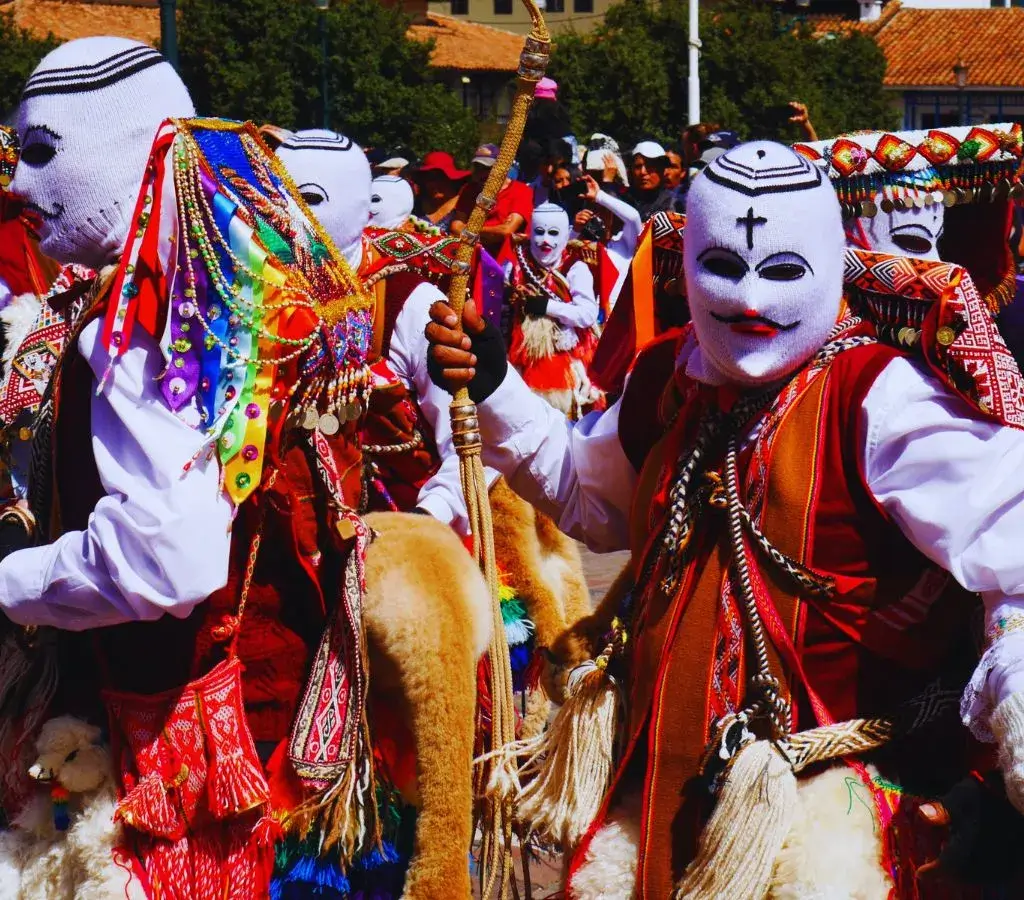The festivity of the Virgin of Carmen is celebrated in different parts of Peru and the world; it is a colorful celebration full of culture, celebrated every year on July 16th.

The history of the Virgin of Carmen consists of the first book of Kings in the Bible (18:19), where the prophet Elijah lived in a cave on Mount Carmel in Israel. Elijah went up to pray for the drought that affected his population, who, out of gratitude, stopped venerating the god Baal.
Over time, a special meaning was given to the mountain where people went to pray, and it was there that the Order of Carmelites or Order of Our Lady of Mount Carmel arose, the main antecedent of devotion to the Virgin of Carmen.
On July 16, 1251, the sixth Superior General of the Order, named San Simon Stock, witnessed the apparition of the Virgin of Carmen, who gave him a scapular that granted the opportunity to go to heaven upon death. This is how homage to the Virgin of Carmen began. The Carmelite friars abandoned the place because of the Islamic invasion, spreading the order to the kingdoms of Spain.
The festivity of the Virgin of Carmen takes place in different parts of the world such as Spain, Latin America, and in different departments of Peru, Lima, Ancash, Lima, Callao, and Cusco.
In Cusco, the main celebration takes place in the province of Paucartambo, located southeast of the Andes, 4 hours from Cusco. The central day is July 16th; however, the festival extends from July 15th to 18th.
The feast of the Virgin of Carmen has its main date on July 16th; however, in the Paucartambo festivity, it is celebrated every year for 4 days.
On July 15th, the festivities begin with the "entry" of the troupes. The Maqtas enter on a fire truck, the Qhapaq Qolla from the Qollao region, the Qapaq Ch'uncho enter from the north, the Majeños enter on horseback, and the Chukchus make their entrance on a truck. All this activity represents reverence and fervor.
On July 16th, the central date of the Virgin of Carmen, begins with a dawn mass at the start of the day, followed by the festival mass accompanied by music and dances. After the ceremony, the troupes dance through the streets and squares, where everyone gathers and drops fruits and small objects from the balcony of the municipal library.
It is believed that this day is a day of omens; if the virgin appears rosy, it will be a sign of vitality, and if the virgin shows her pale face, it will be a sign of sorrow.
On July 17th, homage is paid to the carguyoc and members of the troupes who have passed away. In the afternoon, the virgin leaves while visitors and residents await the blessing at the Carlos III bridge.
On July 18th, is the final day; crowds gather to receive blessings, and the troupes bid farewell to the virgin until the next year, safeguarding the virgin in her temple.

The dances are one of the most important attractions of the festival, with a large list of troupes made up of faithful devotees who dance and celebrate in honor of the virgin.
Danzaq is a dance that represents seductive men of young ladies, conquerors of committed women, and consolers of widowed women. Among its characteristics are its size, sensuality, and posture. They carry a stick in their right hand, their garments are colorful, and they wear the image of the virgin on their chest.
Chunchachas is a dance characterized by being composed of young women who represent the warrior jungle woman; it is a young dance that visits the Virgin from the Kosñipata valley.
This dance represents slaves brought from the coast of Bolivia and Peru; in its staging and melodies, they demonstrate their suffering before the Virgin of Carmen. The music is entrusted to people who master the violin, accordion, quena, harp, and drum. It is made up of the caporal or black king, soldiers with their captains, and children who will be captains in the future.
The Qhapaq Ch'uncho dance represents the warriors of the Kosñipata jungle when they enter the festivity, carrying fruits, parrots, huayruros, and other local products used for exchanges. This troupe plays the role of guardians and is composed of the Chuncho king, followed by 2 rows of dance members, and along with them, the monkey who enlivens the dance with its performance.


